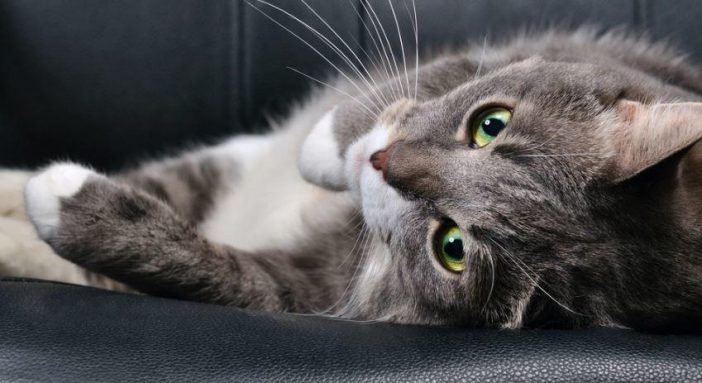Calcium is one of the most essential minerals with many important functions, see calcium for cats sources, functions and deficiency. About 99% is stored in bones while the remainder in extracellular fluids including blood serum.
The total blood calcium is made up of the ionized form (iCa) which is about 50%, that bound to protein (pCa) making up 40%) and the remainder in complexed form. Also, the total calcium concentration in blood is proportional to iCa in healthy animals.
While looking at hypercalcemia in cats, we did mention one of its most often cause to be idiopathic meaning its cause is unknown or unexplained.
Although it is associated with high ionized calcium in the cat’s blood and low parathyroid hormone level. According to the Central Toronto Veterinary Referral Clinic, the is a “negative parathyroid related peptide (PTH-rp), normal kidney values, normal response to ACTH stimulation testing, no evidence neoplasia (lymphoma, multiple myeloma or apocrine gland anal sac adenocarcinoma).”
Furthermore, it is not associated with vitamin D toxicity, granulomatous disease or any other known cause of this condition.

There are several hypotheses theorizing the cause of idiopathic hypercalcemia (IHC) in cats including “acidifying, magnesium restricted diets to prevent struvite crystalluria/urolithiasis has had an impact on this relatively new syndrome,” states MSPCA.
Also, some cat’s food vitamin D content and, genetic predisposition (with some breeds such as the Himalayas, Persians, and domestic long-haired cats over-represented) has been blamed IHC.
Finally, the condition is not gender or age specific. Cats aged from 6 months to 20 years can be affected.
Calcium regulation or homeostasis
Regulation happens through the collaboration of parathyroid hormone (PTH), vitamin D, and calcitonin with PTH being the primary determinant
Clinical signs
About 46% [1] of the cases do not present clinical signs and the elevated calcium is noted during routine bloodwork. Some of the common symptoms include:
- Anorexia
- weight loss
- vomiting
- constipation
- urinal tract stones
- lethargy
- diarrhea
Diagnosis
Diagnosis is same what we discussed while looking at hypercalcemia in cats and it involves things such as looking at your cat’s history, diet, total blood count, biochemistry profile, the concentration of PTH and PTH-rp (PHT related hormone), vitamin D2 measurement, ultrasound, and radiographs.
Ionized calcium (iCa) test will be more conclusive as it will indicate the specific levels iCa although it is a little more technical
Since IHC is dependent on parathyroid glands, low PTH is expected. However, if it is high, then hyperparathyroidism will be suspected. Furthermore, if the level of phosphate is also high, then it may be hypervitaminosis D.
These tests and a few others will help rule out the possibility of other causes of hypercalcemia so that the cause can only be considered idiopathic.
Treatment
IHC causes moderate iCa elevations and it might not require an emergency intervention such as the use of IV fluids.
However, treatment is necessary if during monitoring period the iCa concentration keeps rising or there are signs such as kidney stones, constipation, vomiting, a rise in phosphorous, creatinine, BUN, and so on as they signify calcium toxicity.
Chronic cases of hypercalcemia are likely to uroliths, kidney dysfunction, and various gastrointestinal tract signs and must be treated. Otherwise, here is a way to deal with IHC.
a). Modify diets for 6-8 weeks
Discontinue any acidifying diets as well as magnesium-restricted ones as they encourage bones to release calcium. Common acidifying ingredients include l-methionine, ammonium chloride, and phosphoric acid.
Secondly, your pet should have high fiber as this reduces the amount of calcium absorbed. Try Royal Canin Gastrointestinal Fiber Response HF, Purina OM Overweight Management or Iams Intestinal Plus Low-Residue, Hill’s w/d foods.
Thirdly, consider diets for kidney disorders such as Purina NF Kidney Function since they have high fiber, are less acidifying or have lower phosphorous and calcium amounts. Also, their alkalinization effect decreases the amount of calcium being released from bones.
Fourthly, go for diets that prevent calcium oxalate stones as they are “restricted in calcium and have less urinary acidification (neutral pH urine production,” states Proceedings of the 2013 American College of Veterinary Internal Medicine (ACVIM) Forum.
Additionally, consider diets that mimic what these pets eat in the wild where proteins account for 40-60% of their diets, fats 30-50% and carbohydrates should be kept below 15%.
Finally, go for home-based diets that are low in vitamin D and calcium. Avoid organ meats (high in vitamin A and fish liver oil (rich in vitamin D). However, ensure there are adequate amounts of calcium and in its required ratio with phosphorous.
However, while doing this diet modification, ensure avoid dry foods. Wet foods spur urinary dilution and reduce chances oxalates.
b). Go for medications
If diets do not show any improvement, your vet may consider medications including bisphosphonates such as alendronate (prevents loss of bone density).
also, alendronate may be effective when compared to glucocorticosteroids such as prednisone.
